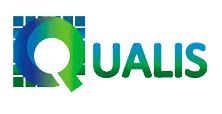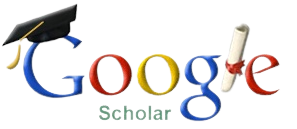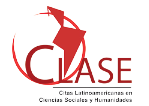Documentary language and the sign: an analysis on term and concept
DOI:
https://doi.org/10.5433/1981-8920.2021v26n3p697Keywords:
Linguistics, Semiotics, Knowledge organization, Concept theory, Domain analysisAbstract
Objective: to analyze the sign as the term-concept binomial and the technical relationship for the application of documentary language. In addition, it intend to carry out this analysis by exploring some theories of the sign, highlighting Semiology, defended by Saussure and Semiotics, presented by Peirce, thus reflecting on the concept in its role as a sign in order to verify how it acts in the discursive plane and how it lodges in the domainMethods: qualitative nature, exploratory type, in which theories from Linguistics are analyzed, and Peircean Semiotics, to understand the relationship between sign and object. In addition, works published in the Knowledge Organization area were recovered, establishing dialogues between the areas, providing cross-information based on interdisciplinarity, enabling the construction of inferences in search of reflections and innovations.
Results: the procedures inherent to the documentary language can become more systemic and punctual with interdisciplinary action. In this perspective, the understanding of the nature of the term, its relationship with the lexicon, its potential to be a sign, its historicity and ideological marks in the face of conventionality under the linguistic bias, in addition to understanding it in its philosophical nature with the corroborating Peircean Semiotics the elaboration of the documentary language and its applicability to normalize meaning, respecting the needs of the domains, while paying attention to social practices.
Conclusions: language theories have a lot to contribute on theoretical issues, with discussions about the representation of knowledge and its relationship with documentary language, thus directing the understanding of the systematization of linguistic phenomena in the elaboration of documentary language, thus collaborating for good practice knowledge organization systems.
Downloads
References
ALMEIDA, C. C. Peirce e a Organização da Informação: contribuições teóricas da Semiótica e do Pragmatismo. Tese (Doutorado em Ciência da Informação) - Universidade Estadual Paulista, Marília, 2009.
ALVARES, L. Organização da Informação e do conhecimento: conceitos, subsídios interdisciplinares e aplicações. São Paulo: B4Editores, 2012.
BAKHTIN, M. M. Marxismo e filosofia da linguagem: problemas fundamentais do método sociológico da linguagem. Tradução: Michel Lahud e Yara Frateschi Vieira. 12. ed. São Paulo: Hucitec, 2006.
BARITÉ, M. G. Diccionario de Organización del Conocimiento: Classificación, Indización, Terminología. 6. ed. Montevideo: CSIC, 2015.
BARITÉ, M. G. Organización del conocimiento: um nuevo marco teóricoconceptual en bibliotecologia y documentacion. In: CARRARA, K. Educação, universidade e pesquisa. III Simpósio em Filosofia e Ciências Marília. São Paulo: Unesp-Marília-Publicações, Fapesp, 2001.
CABRÉ, M. T. Norma y normas en terminologia: concepto, tipología y justificación. In: ISQUERDO, A. N; FINATTO, M. J. B. As ciências do léxico: lexicologia, lexicografia, terminologia. v. 4. Porto Alegre: Editora da UFRGS, 2010.
CHARAUDEAU, P.; MAINGUENEAU, D. Dicionário de análise do discurso. Tradução: Fabiana Komesu. 3. ed. São Paulo: Contexto, 2020.
CINTRA, A.M. Para entender as linguagens documentárias. São Paulo: Polis, 1994.
DAHLBERG, I. Teoria do conceito. Ciência da Informação, [S.l.], v. 7, n. 2, dec. 1978. ISSN 1518-8353. Disponível em: http://revista.ibict.br/ciinf/article/view/115/115. Acesso em: 10 jan. 2019.
DE WALL, C. Sobre Pragmatismo. Tradução: Cassiano Terra Rodrigues. São Paulo: Edições Loyola, 2007.
DUBOIS, J. Dicionário de Linguística. Tradução: Bras. Izidoro Blikstein. São Paulo: Cultrix, 1998.
FUJITA, M. S. L.; Nardi, M. I. A. A leitura em análise documentária. Transinformação, v. 10, n. 3, 1998.
GREIMAS, A. J.; COURTÊS, J. Dicionário de Semiótica. Tradução: Alceu Dias Lima.2. ed. São Paulo: Contexto, 2016.
GREIMAS, A. J. Semântica Estrutural. Tradução: Haquira Osakape e Izidoro Blikstein. São Paulo: Cultrix, 1973.
HJELMSLEV, L. Prolegômenos a uma teoria da linguagem. Tradução: J. Teixeira Coelho Netto. São Paulo: Perspectiva, 2013.
HJORLAND, B. Concept Theory. Journal of the American Society for Information Science and Techonology, v. 60, n. 8, 1519-1536, 2009.
HJORLAND, B. Fundamentals of knowledge organization. Knowledge Organization, v. 30, n. 2, p. 87- 111, 2003.
LARA, M. L. L. G. Conceitos de organização e representação do conhecimento na ótica das reflexões do grupo temma. Informação & Informação, v. 16, n. 2, 92-121, 2011.
LARA, M. L. L. G. Informação, informatividade e linguística documentária: alguns paralelos com as reflexões de Hjorland e Capurro. DataGramaZero, v. 9, n. 6, 2008.
LARA, M. L. L. G. Linguagem documentária e terminologia. Transinformação, Campinas v. 16, n. 3, p. 231-240, 2004.
LARA, M. L. L. G. O unicórnio (o rinoceronte, o ornitorrinco...): a análise documentária e a linguagem documentária. DataGramaZero, v. 2, n. 6, 2001.
LARA, M. L. L. G.; TÁLAMO, M. F. G. M. Uma experiência na interface linguística documentária e terminologia. DataGramaZero, v. 8, n. 5, 2007.
MAIMONE, G. D.; TÁLAMO, M. F. G. M. Linguística e terminologia: contribuições para a elaboração de tesauros em ciência da informação. DataGramaZero, v. 12, n. 2, 2011.
PÊCHEUX, M. Semântica e discurso: uma crítica à afirmação do óbvio. Tradução: Eunice Pulcinelli Orlandi. 3. ed. Campinas: Editora da UNICAMP, 1997.
PEIRCE, C. S. Semiótica. São Paulo: Perspectiva, 2017.
SAUSSURE, F. Curso de linguística geral. Tradução: Bras. Antônio Chelini. São Paulo: Cultrix, 2006.
SANTOS, J. C. F.; MOREIRA, W. Skos: uma análise sobre as abordagens e suas as aplicações na ciência da informação. Informação & Informação, v. 23, n. 3, 362-389, 2018.
SILVERIA, L. F. B. Curso de Semiótica geral. São Paulo: Quartier Latin, 2007
SMIRAGLIA, R. P. The "nature" of a work: implications for the organization of knowledge. Lanham: Scarecrow, 2001.
TÁLAMO, M. F. G. M.; LARA, M. L. L. G. Interface entre linguística, terminologia e documentação. Brazilian Journal of Information Science, v. 3, n. 2, 2009.
Downloads
Published
How to Cite
Issue
Section
License
Copyright (c) 2021 Informação & Informação

This work is licensed under a Creative Commons Attribution 4.0 International License.
A revista se reserva o direito de efetuar, nos originais, alterações de ordem normativa, ortográfica e gramatical, com vistas a manter o padrão culto da língua e a credibilidade do veículo. Respeitará, no entanto, o estilo de escrever dos autores. Alterações, correções ou sugestões de ordem conceitual serão encaminhadas aos autores, quando necessário.
O conteúdo dos textos e a citação e uso de imagens submetidas são de inteira responsabilidade dos autores.
Em todas as citações posteriores, deverá ser consignada a fonte original de publicação, no caso a Informação & Informação.














